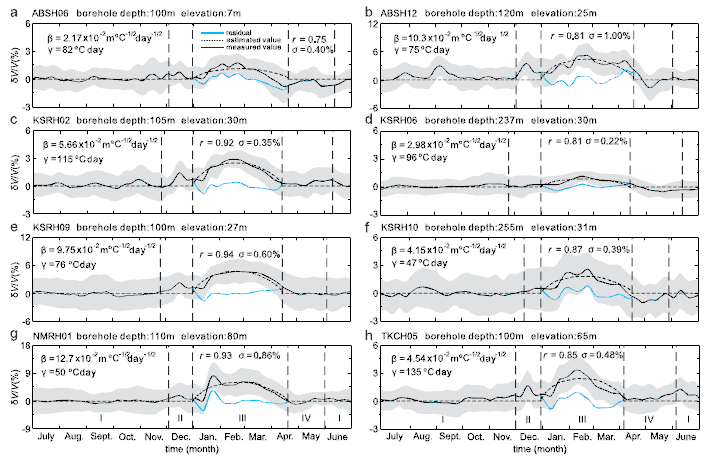On August 19, 2019, Geophysical Research Letters, a top journal in the field of geophysics, published a paper on near-surface seismic velocity by the research group of Prof. Miao Yu and the research group of Prof. Liu HuaBei from school of Civil Engineering and Mechanics, HUST. This paper is entitled as “Influence of Seasonal Frozen Soil on Near-surface Shear Wave Velocity in Eastern Hokkaido, Japan”. The authors of this paper include Prof. Miao Yu (first author), postgraduate Shi Yang, Prof. Zhuang Haiyang of Nanjing Tech University, Dr. Wang Suyang (corresponding author), Prof. Liu Huabei, and Dr. Yu Xiaobo.


Near-surface shear wave velocity is of great importance in the fields of geophysics and earthquake engineering, since it is closely correlated with the physical and mechanical properties of soil and rock in shallow crust. In engineering practice, it has a wide range of applications, such as classification of building sites, evaluation of liquefaction potential, estimation of seismic response, and assessment of earthquake loss. In recent years, shear wave velocity has been used to detect minor material changes in the subsurface for seismic monitoring of faults, volcanoes, landslides, and hydrocarbon reservoirs.
Previous studies have found that the near-surface shear wave velocity is subjected to a variety of environmental events and changes, such as strong ground motion, volcanic eruption, plate motion, ice sheet melting, earth tide, precipitation, soil frost, and the changes in groundwater level, atmospheric pressure, and sea level. This makes it sometimes difficult to link shear wave velocity changes with geological disasters, because seismic velocity changes related to geological disasters may be hidden in those related to environmental events. Hence, it is critical to correct seismic velocity changes related to environmental effects to better detect seismic velocity changes related to geological disasters.
Over a half of the total land surface in the Northern Hemisphere freezes and thaws seasonally. For these areas, when the temperature drops below the freezing point in winter, the surface soil will become much harder as the water in the soil freezes, and when the temperature rises above the freezing point in spring, the surface soil will gradually soften as the ice in the soil melts. This seasonal change of surface soil has a tremendous impact on the infrastructures and ecosystem.
The research group of Prof. Miao and the research group of Prof. Liu measure near-surface seismic velocities using earthquake records. They detect an increase of seismic velocity in a depth range of a few hundred meters during January to March due to seasonal frost activity. They find that the seismic velocity change is closely related to the local atmospheric temperature in winter and spring months. They also propose a temperature-dependent model to estimate the influence of seasonal frozen soil on near-surface seismic velocity. These results open the possibility of frost monitoring by using earthquake records.
The work is supported by the the National Key Research and Development Program of China, the National Science Foundation of China, and the China Postdoctoral Science Foundation.
The article can be found at: https://agupubs.onlinelibrary.wiley.com/doi/10.1029/2019GL082282
